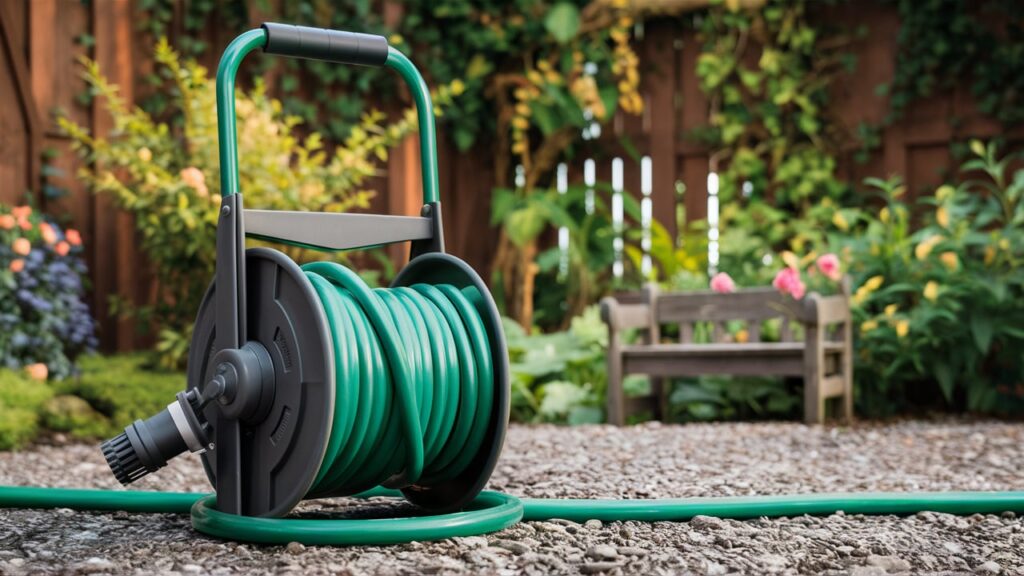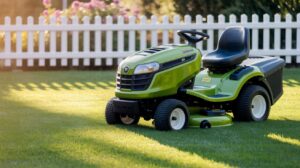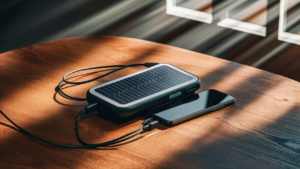Expandable garden hoses are popular for their flexibility and convenience. They save space and are easy to store.
Recommended Best Expandable Garden Hose 2025
| Recommendation | Product |
| Best Overall | Pocket Hose Copper Bullet Expandable Garden Hose |
| Popular Choice | J&B XpandaHose 75ft Expandable Garden Hose |
| Best Value | Palint Expandable Garden Hose 150 ft |
| Best Budget | Pocket Hose Expandable Garden Hose 25 FT |
| Another Excellent Pick | Bommiyan Expandable Garden Hose |
Keeping your expandable garden hose in good shape ensures it lasts longer. Regular maintenance can prevent leaks, tears, and other issues. This guide will help you understand the best practices for maintaining your hose. From proper storage to gentle handling, we will cover all you need to know.
By following these simple tips, you can extend the life of your hose and keep your garden looking great. Let’s dive into the essential steps for caring for your expandable garden hose.
Choosing The Right Hose
Selecting the best hose is vital for an easy gardening experience. Learn how to maintain your expandable garden hose for long-lasting use. Keep your garden green and hose in top shape with simple steps.
When it comes to maintaining your expandable garden hose, choosing the right one is the first step to ensuring longevity and ease of use. The market offers a range of options, and it can be overwhelming to pick the best fit for your needs. Let’s simplify the process by considering two key factors: material types and length options.
Material Types
Expandable garden hoses come in various materials, and each has its own benefits and drawbacks. The most common materials are latex and TPC (Thermoplastic Copolyester).
Latex hoses are popular because they are lightweight and highly flexible. They can expand up to three times their original length. However, they may not be as durable in extreme weather conditions.
TPC hoses are more robust and resistant to wear and tear. They handle higher pressures and last longer, even in harsh weather. On the downside, they can be a bit heavier and less flexible than latex.
When picking a material, think about your climate and how often you’ll use the hose. If you live in an area with extreme temperatures, TPC might be the better option. For occasional use in milder climates, latex could be more convenient.
Length Options
Choosing the right length for your garden hose is crucial. A hose that’s too short won’t reach all areas of your garden, while one that’s too long can be cumbersome and heavy.
Expandable hoses come in various lengths—25 feet, 50 feet, 75 feet, and even 100 feet. Consider the size of your garden and the distance from your water source.
For instance, if you have a small backyard, a 25-foot hose should suffice. If your garden stretches across a larger area, a 75-foot or 100-foot hose might be necessary.
Remember, an expandable hose will shrink back to a shorter length when not in use, making storage easier. This flexibility means you can opt for a longer hose without worrying about storage issues.
In my experience, a 50-foot hose has been the sweet spot for a medium-sized garden. It’s long enough to reach all corners but still easy to manage and store.
Think about your specific needs and garden layout. What’s the distance between your water source and the farthest point you need to water? This will help you choose the perfect length.
Choosing the right expandable garden hose can make a significant difference in your gardening experience. Pay attention to material types and length options to find the hose that fits your needs perfectly. What’s your top priority when selecting a garden hose?
Initial Setup
Setting up your expandable garden hose can be a breeze if you follow a few simple steps. Whether you’re a seasoned gardener or just starting out, getting your hose ready for use is crucial for a smooth watering experience.
Unpacking The Hose
The first step is to carefully unpack your hose. Make sure to remove all packaging materials. Look for any instructions or manuals that might be included.
Check the hose for any visible damage. An expandable hose should be free from holes and tears. If you spot any issues, contact the manufacturer immediately.
Take note of all the components. Typically, an expandable hose will come with connectors and possibly a nozzle. Keep these handy for the next steps.
Connecting To Water Source
Now that your hose is unpacked, it’s time to connect it to your water source. Find the water tap in your garden. Ensure it is clean and free from debris.
Attach the hose connector to the tap. Twist it securely to avoid leaks. If your hose comes with a washer, make sure it’s in place before connecting.
Turn the water on slowly. This allows the hose to expand gradually. Check for any leaks at the connection point. If you find any, tighten the connector further.
Feel the hose as it expands. Notice how lightweight and flexible it becomes. This makes it easy to maneuver around your garden.
Have you ever wondered why expandable hoses are so popular? Their convenience and space-saving design make them a favorite among gardeners. Plus, they can be easily stored when not in use.
As you set up your hose, take a moment to appreciate the simplicity of the process. You’re now ready to water your plants with ease.
What challenges have you faced with garden hoses in the past? Share your experiences in the comments below, and let’s find solutions together!
Proper Use
Proper use of an expandable garden hose involves avoiding sharp objects and storing it properly. Always drain the hose completely to prevent damage and ensure longevity. Regularly inspect for leaks and wear to maintain its efficiency.
Proper Use
Maintaining an expandable garden hose begins with understanding its proper use. Using it correctly can extend its lifespan and ensure it works efficiently every time you need it. Let’s dive into some key aspects to consider.
Water Pressure Guidelines
Expandable garden hoses are designed to work within specific water pressure ranges. Check your hose’s manual for the recommended pressure levels.
Too high pressure can cause the hose to burst or leak. Too low pressure may not expand the hose properly.
If you’re unsure, you can use a pressure gauge to measure the water pressure. Aim for a balanced pressure that supports expansion without causing damage.
Avoiding Kinks
One common issue with garden hoses is kinking. Kinks can restrict water flow and cause wear and tear.
To avoid kinks, always stretch the hose out fully before turning on the water. Straighten out any twists or bends.
When not in use, store the hose loosely coiled in a cool, dry place. Avoid tightly wrapping it around hooks or reels, as this can create permanent bends.
Have you ever had a hose that constantly kinked? What did you do to fix it? Share your tips and experiences with us in the comments.
Proper use of your expandable garden hose is all about paying attention to these details. By following these simple guidelines, you can ensure your hose remains in great shape for years to come.
Storage Solutions
Proper storage of your expandable garden hose is essential to extend its lifespan and maintain its functionality. A well-stored hose avoids damage and kinks, ensuring you’re ready for gardening whenever you need. Let’s explore some effective storage solutions.
Ideal Storage Locations
Finding the right spot for your expandable garden hose can make all the difference. Store your hose in a cool, dry place to avoid exposure to harsh elements. Consider using a shed, garage, or a dedicated hose reel.
If you don’t have indoor storage, a shaded area in your garden can work. Ensure it’s elevated to prevent contact with the ground. This helps avoid moisture and pests.
Vertical storage is also a good option. Hang your hose on a wall mount or a hose hanger. This keeps it off the ground and saves space.
Preventing Damage
Taking steps to prevent damage is crucial. Always drain water from the hose before storing it. This prevents internal residue buildup and reduces the risk of freezing in colder months.
Avoid sharp bends and twists when coiling your hose. A natural loop or figure-eight pattern is ideal. This maintains the hose’s integrity and prevents kinks.
Consider using a hose bag for extra protection. It shields the hose from dirt and direct sunlight. Plus, it keeps your storage area tidy and organized.
Remember to check for wear and tear regularly. Replace any damaged parts promptly to ensure your hose stays in top condition.
What storage solutions have you tried for your expandable garden hose? Share your tips and experiences in the comments below!
Regular Maintenance
Regular maintenance of an expandable garden hose ensures its longevity and optimal performance. Check for leaks, store it properly, and avoid over-stretching to keep it in good condition.
Keeping your expandable garden hose in good condition ensures it lasts longer. Regular maintenance can save you money and prevent frustration. It’s easy if you follow a few simple steps.
Cleaning Techniques
First, drain the hose completely. This prevents water from sitting inside. Use a mild soap mixed with water. Gently scrub the exterior with a soft brush. Rinse thoroughly to remove any soap residue. Let the hose dry completely before storing it.
Checking For Leaks
Inspect the hose for any visible damage. Look for cracks, holes, or worn-out areas. Turn on the water and watch for any leaks. If you find a leak, use a hose repair kit. Follow the instructions on the kit for the best results. Regularly checking for leaks can prevent bigger problems later.
“`
Handling Temperature Extremes
Maintaining an expandable garden hose is crucial for its longevity. Handling temperature extremes is one of the essential aspects. Extreme temperatures can damage your hose and reduce its life. Here are some tips to help you manage your hose in both cold and hot weather.
Cold Weather Tips
Winter can be harsh on your garden hose. Water left inside can freeze and expand. This can cause the hose to crack. Always drain the hose after use. Store it indoors to protect it from freezing temperatures. You can also use a heated storage box.
Insulating your hose can also help. Wrap it in a foam pipe insulation. This keeps the hose warm. Another tip is to use a hose reel. It helps in easy storage and prevents tangling.
Hot Weather Precautions
Heat can also damage your garden hose. The sun’s UV rays can weaken the hose material. Store the hose in a shaded area. Avoid leaving it in direct sunlight for long periods. Use a hose reel or a storage box.
Check for leaks regularly. Heat can cause the material to expand and form cracks. A burst hose can waste a lot of water. Always turn off the water supply after use. This prevents the hose from expanding and bursting under pressure.
Using these tips, you can extend the life of your expandable garden hose. Proper maintenance is key to keeping it in good condition throughout the year.
Troubleshooting Common Issues
Troubleshooting common issues with an expandable garden hose involves checking for leaks, ensuring proper water pressure, and storing the hose correctly. Regular maintenance keeps your hose in good working condition.
Maintaining an expandable garden hose can sometimes feel like a challenge, especially when common issues arise. Whether it’s low pressure, leaks, or tears, understanding how to troubleshoot these problems can save you time and frustration. Let’s dive into some practical solutions to keep your garden hose in top shape.
Low Pressure Problems
Low water pressure can be quite frustrating, especially when you’re trying to water your garden efficiently.
First, check if your hose is fully expanded. Sometimes, expandable hoses need a few seconds to reach their full length and pressure. Ensure the hose is not kinked or twisted, as this can obstruct water flow.
If the problem persists, examine the faucet connection. A loose or damaged connection can cause significant pressure loss. Tighten the connection or replace it if necessary.
Sometimes, debris or mineral buildup inside the hose can reduce pressure. Rinse the hose thoroughly to remove any blockages.
Leaks And Tears
Leaks and tears in your garden hose are not only annoying but can also waste water.
Inspect the hose regularly for signs of wear and tear. Small leaks can often be fixed with waterproof tape or hose repair kits. These kits are easy to use and can extend the life of your hose considerably.
For larger tears, consider cutting out the damaged section and reconnecting the two ends with a hose connector. This method works well for longer hoses where a small section can be sacrificed.
Always store your hose properly to avoid damage. Keep it out of direct sunlight and extreme temperatures, which can weaken the material and lead to leaks.
Have you faced any other issues with your expandable garden hose? Share your experiences or tips in the comments below!
By addressing these common problems, you can ensure your expandable garden hose remains a reliable tool for your gardening needs.

Extending Hose Lifespan
Maintaining an expandable garden hose can be simple and rewarding, especially when you focus on extending its lifespan. A durable hose saves you money and ensures your gardening tasks are hassle-free. To help you get the most out of your hose, let’s explore some practical tips for extending its longevity.
Proper Use Practices
Using your expandable garden hose correctly is crucial for its longevity. Always ensure the hose is fully extended before turning on the water. This prevents the hose from over-stretching and potentially breaking.
Avoid dragging the hose across rough surfaces like gravel or sharp edges. These can cause tears or punctures. Instead, pick it up and move it gently.
When you’re done using the hose, turn off the water at the source and allow the hose to retract naturally. This helps maintain its elasticity and prevents unnecessary wear and tear.
Regular Inspections
Inspecting your expandable garden hose regularly helps catch small issues before they become big problems. Check for leaks, cracks, or bulges. These are signs that the hose may need repair or replacement.
Look at the connectors closely. They should be tight and secure. A loose or damaged connector can cause leaks and reduce water pressure.
Keep an eye on the hose’s outer material. If it starts to fray or looks worn out, it might be time to invest in a new one. Regular inspections ensure your hose is always in top shape.
Have you ever experienced a sudden drop in water pressure while watering your garden? It could be a sign that your hose needs some attention. By following these simple tips, you can extend the lifespan of your expandable garden hose and enjoy a lush, healthy garden year-round.
Frequently Asked Questions
What Is The Best Way To Store An Expandable Garden Hose?
Store an expandable garden hose in a cool, dry place. Drain water completely before storage. Use a hose reel or storage bag to prevent kinks.
What Is The Downside Of Expandable Hoses?
Expandable hoses can burst under high pressure, have a shorter lifespan, and may tangle easily. They are less durable than traditional hoses.
Can You Leave Water In An Expandable Hose?
No, you should not leave water in an expandable hose. It can damage the hose and shorten its lifespan. Always drain and store it properly.
What Is The Best Lubricant For Garden Hose Threads?
Silicone-based lubricants work best for garden hose threads. They prevent rust, ensure smooth connections, and are water-resistant. Use a small amount for optimal results.
Conclusion
Maintaining an expandable garden hose doesn’t have to be hard. Regular care ensures longer life. Store it properly after each use. Avoid exposure to harsh weather. Fix any leaks immediately. Clean it thoroughly to prevent clogs. Follow these steps to keep your hose in great shape.
Your garden will thank you. Happy gardening!








